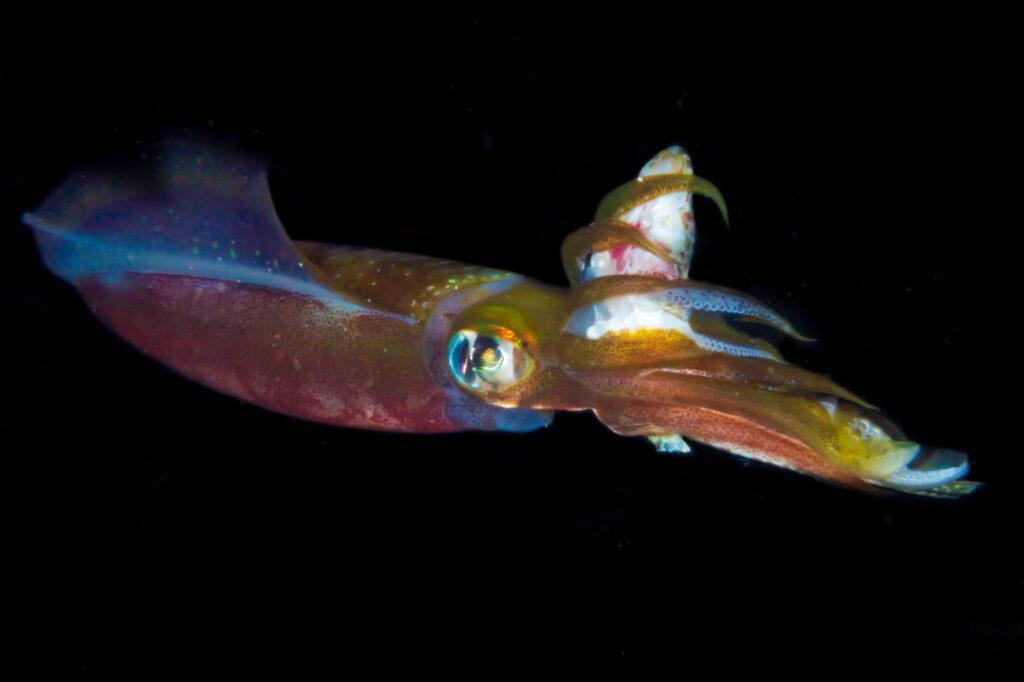Increasing number of Anisakis parasites
The number of Anisakis parasites most commonly found in fish has increased significantly in recent decades. The increasing trend, which may be further exacerbated by adulteration, is supported by several studies, such as Fiorenza et al. (2020) or Kent et al. (2020).
For the first time, the parasite Sulcascaris sulcata, also of the genus Anisakis, was identified in edible scallops, a parasite that is basically found in sea turtles. Larvae of the nematode have been identified in Pecten jacobeus and Aequipecten opercularis species collected from the North Adriatic Sea.
Squid range expansion
While climate change, pollution and overfishing are reducing tuna, cod and swordfish populations, squid are becoming more diverse. For example, the species Illex coindentii, a species of shortfin squid, is now found in the North Sea. Squid are fast-growing and short-lived, allowing them to adapt easily to changing environments in a relatively short time. Future population dynamics are difficult to predict, but other fish species may also decline, and predators may gain an ecological advantage from the increase in squid.

Increasing risk of Vibrio infections
Within the framework of the CLEFSA (CLimate change and Emerging risks for Food SAfety) project, the issue of Vibrio infections, which are on the rise in Europe due to climate change, especially rising temperatures and rainfall, has been presented. Vibrio species occur in coastal waters worldwide and cause gastrointestinal symptoms in humans. The spread of Vibrio spp. in seawater is strongly dependent on the presence of warm water. In the Baltic Sea, Vibrio species have already increased significantly, probably due to low salinity. Typically, outbreaks occur as wound infections, but foodborne infections cannot be excluded through the consumption of raw fish or shellfish.
There have been signs of climate change-induced spread of Vibrio species in the past. In 2015, samples of bivalve molluscs from the south coast of England showed the presence of Vibrio species and tetrodotoxin (TTX) that had not been seen before in temperate waters. TTX is a naturally occurring marine toxin produced by bacteria and can be lethal. Prior to 2015, it was mainly detected in regions with high sea temperatures, e.g. New Zealand, Japan, and mainly in pufferfish. Its appearance in European shellfish was an indication that rising sea surface temperatures could lead to the release of new toxins in European waters. For TTX, an acute reference dose of 0.25 μg/kg bw was established by EFSA in 2017.
Poisonings caused by domoic acid
The toxin, called domoic acid, is produced by algae (e.g. Pseudo-nitzschia) in the seas, and cases have been reported in the Pacific Ocean so far, but climate change may make harmful algal blooms more common in the future, thus more cases can be expected.
So far, domoic acid has mainly been linked to shellfish poisoning, but it has also been found in other marine animals, such as crabs, and has been linked to the death of marine mammals, e.g. whales or sea lions.
